
Review
«Mad Heidi»: cheese atrocities, Swiss trash and other horrors
by Livia Gamper


Chris Blaser is a VFX supervisor. One of the films he worked on is Swiss production Mad Heidi. I talked with him about how he got into this profession and how Alpöhi’s hut was made to blow up in the movie.
«I was part of the film crew as the VFX supervisor,» Chris Blaser wrote in the comments of my Mad Heidi review. Chris was responsible for exploding huts, fondue zombies and other splatter effects in the Swiss film.
VFX, or visual effects, are the digital effects in a movie that are added in post-production. There are tons of these in Mad Heidi – think fondue boarding (waterboarding, but with hot cheese), or Goat Peter’s face being shot off in the village square.
I meet Chris in his apartment, where he’s converted his office room to a studio. He talks about his path to becoming a VFX supervisor, how he came to Mad Heidi and why the crew had to look for a new Goat Peter three weeks before the film’s release.
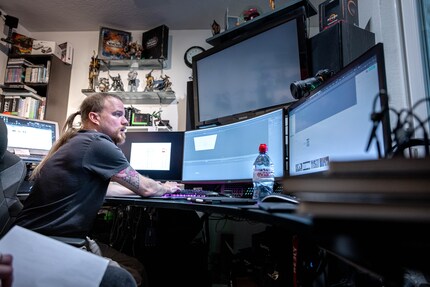
Stepping into Chris’ apartment, there’s no question he loves movies. Seven DVD-filled shelves adorn his living room wall. «This has been my passion since I was ten years old,» Chris tells me. He was particularly taken with the Star Wars saga. Upon seeing the effects from the galaxy far, far away, this much was clear to him: I want to do that, too.
Chris launched into his first attempts on his father’s computer, but VFX still remained a dream. He went on to complete an apprenticeship as a vehicle mechanic, doing web design, graphics and flyers for the youth disco on the side.
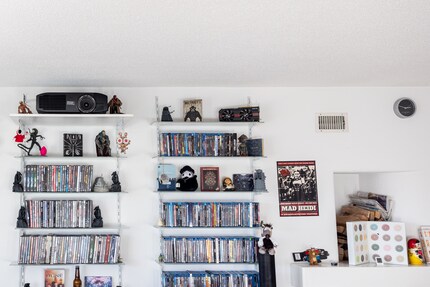
Studying film wasn’t in the cards. There was simply no study programme in visual effects, and Chris couldn’t count on the support of his parents, either. Still, he kept at his dream. He devoured books, watched the making-ofs of movies and taught himself what he needed to know.
In the end, Chris did go on to complete the «Multimedia Producer» programme at the SAE Institute in Zurich. The well-rounded film programme helped him land side jobs in the industry. In addition, he founded a company for 3D rendering and animations. Without 3D rendering, we’d have no visual effects in film today. And, back in 2003, talent in this area was in demand. Swisscom, Apple and HP brought in commissions.
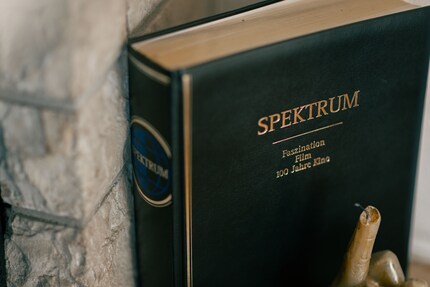
During Chris’ studies at the SAE Institute, he kept his head above water with many different jobs. He worked in almost every field on small films and video productions. He did everything from camera work to directing, where he gained the know-how that made it possible for him to work as a VFX supervisor today.
Chris continued to lack recognition from his parents. «For a long time, my parents didn’t get what I was doing,» he said. Creative work was considered unprofitable at the time, which made it all the more difficult for his parents. The breakthrough for Chris’ company and to gain his parents’ respect came with lucrative orders from the perfume business. «It was tough; you had to work very quickly,» Chris said. The perfume ads for which Chris created 3D videos had been in planning by the companies for years – but the graphics were to be created in just three days.
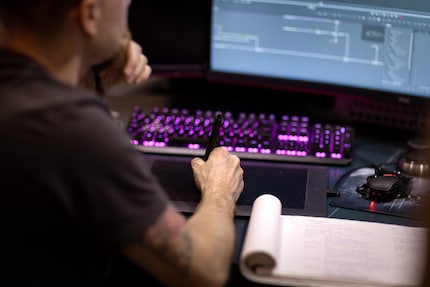
And yet, in a roundabout way, Chris ended up where he always wanted to be: in film. He built the data backup system for «Missen Massaker», the studio for homegateTV and, in 2016, he finally joined the Mad Heidi project.
«With Mad Heidi, we wrote a piece of Swiss film history,» Chris says proudly. Switzerland was a stranger to movies that made it to the cinema through crowdfunding. In the case of Mad Heidi, fans could buy shares, thus becoming co-producers. If the film generates enough revenue, the investment could pay off for the fans, who’d then receive a share of the profits.
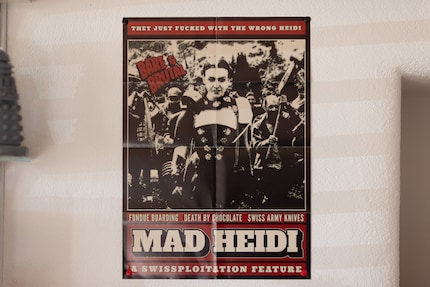
Despite crowdfunding and crowd investment, the budget for Mad Heidi was tight. Chris laughs as he talks about the shoot: «On the set of Mad Heidi, everyone helped out where they could.» It was hectic at times, but the vibe was always good. In total, the film was shot in 27 days – the standard would be about 35 days, Chris explains, but «the budget was frankly tight.» Work hard, play hard, at the saying goes – «Even after exhausting shooting days, we’d often go out for beer with the crew.»
Not everything always went smoothly, as evidenced by Welsh-Zimbabwean actor Kel Matsena’s involvement in the movie. He was the third actor chosen for the role of Goat Peter and the only person of colour of the three; two actors before him had dropped out, one of them just three weeks before the shoot. «They bailed because of the nude scenes,» Chris tells me. «Kel liked it so much in Switzerland that he stayed in the country after the shoot for a vacation,» he adds with a laugh.
Before filming had even begun, the makers of Mad Heidi received several letters of concern because of the trailer. «Among others, they were from Heidiland and a few Christian associations. After the trailer appeared, a lawsuit was also filed by a Swiss pocket knife manufacturer. They didn’t find it so funny that a pocket knife was being shown as a weapon,» Chris recounts. «It’s a satire of every possible Swiss cliché.» What’s more, one of the co-writers lost his job with the police department because of the trailer (link in German).
Finally, Chris and I move from the living room to his office. It’s cold in here. The ventilation’s running to ensure the computer with its huge graphics card doesn’t overheat. On the shelf is the laptop Chris used on the set of Mad Heidi. It’s actually more of a battery case that happens to hold a laptop; on the film set, the laptop had to perform at its peak all day with no power cables.
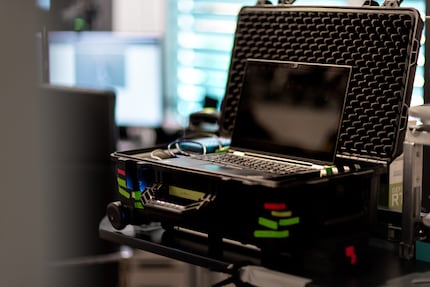
On set, Chris was responsible for making sure the visual effects worked out as they should later in the film. «This had me running around with a tennis ball on a stick, for example,» he explains. In post-production, the tennis ball is replaced with a halberd; handling a real one would not only have been too dangerous for the actors, but also too expensive. Chris coordinated all this work, sending the footage on to a third-party company for post-production, or editing in simple effects himself.
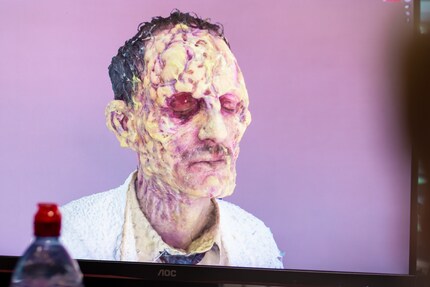
More elaborate still were the scenes with the zombies. They were to walk around in the movie half-dead and full of cheese. To achieve this, Chris made 3D scans of the actors on set using special camera filters. In post-production, the moving zombies were created from these scans on the computer, and the finishing touches were added with special effects.
Another example is Alpöhi’s hut, which is blown up in the movie. «The hut exists in real life; it’s in the Bernese Oberland region. To be able to get it all from top to bottom, I had to get on site with a six-metre tripod and scan everything,» Chris explains. He had the whole hut down in just half an hour.
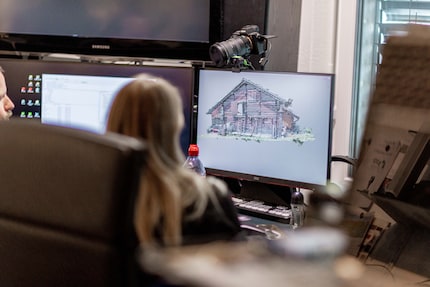
All in all, there are 185 special effects in Mad Heidi. Chris was responsible for all of them – a unique gig. Most people will stop at being a VFX artist. That is, someone who «only» creates the effects, but doesn’t hold a management position with responsibility (often over other VFX artists). «There are very few VFX supervisors in Switzerland. The industry is frankly too small; there are other, easier career paths. That’s why many film productions work with supervisors from abroad,» says Chris, not without pride.
The perseverance he stuck into his career paid off for Chris. Despite the initial challenges he faced, he’s made his dream come true and now gets to do what he loves. And his parents? «They’re proud of me now, of course.»
The film Mad Heidi is currently still screening in some cinemas or can be streamed on madheidi.com for 15 francs.
Header photo: Christian Walker

Testing devices and gadgets is my thing. Some experiments lead to interesting insights, others to demolished phones. I’m hooked on series and can’t imagine life without Netflix. In summer, you’ll find me soaking up the sun by the lake or at a music festival.
Interesting facts about products, behind-the-scenes looks at manufacturers and deep-dives on interesting people.
Show all